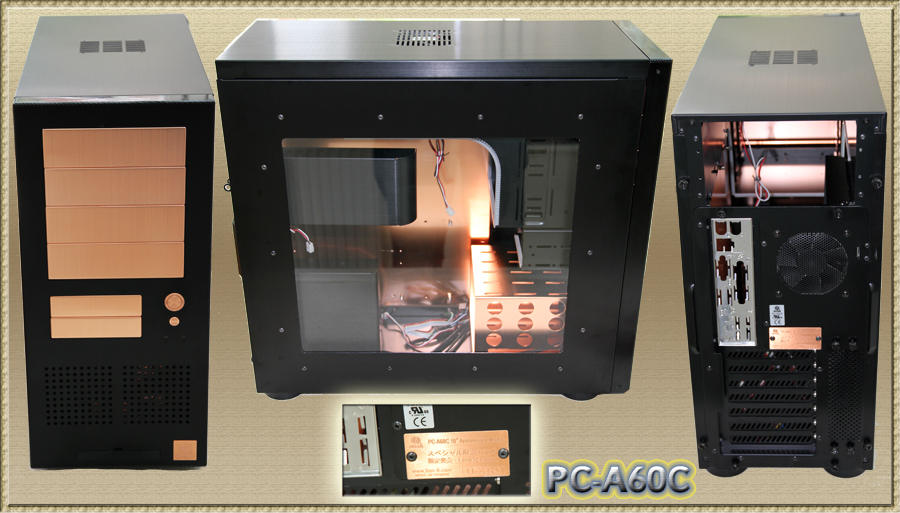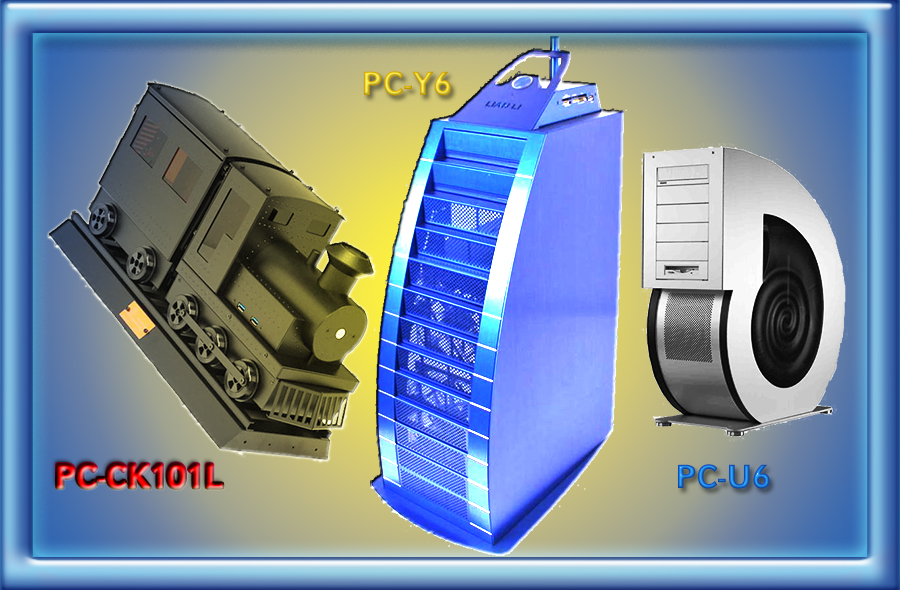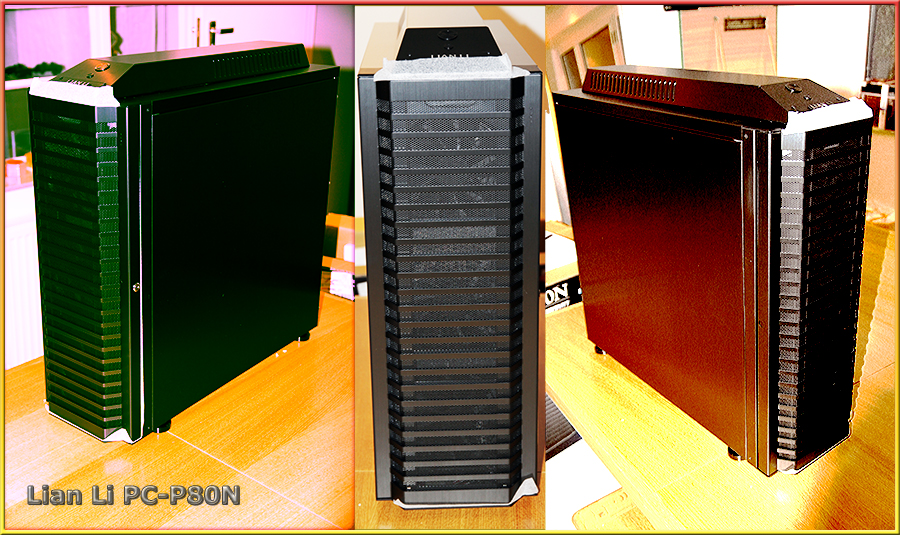A Case in Point.
Coolermaster’s ATCs Annals were a spectacular showcase of how not to fix what hasn’t failed. A phenomenon as rare in the computer industry as a riveting three hour lecture on the subject of commercial scalability accompanied by more slides than selfies on a narcissist’s mobile and perhaps fittingly, such purple patches are all too fleeting. In 2003, when a sizeable chunk of Coolermaster’s artisans splintered to setup their own rival company Silverstone, any semblance of classical charm departed with them. Moreover, when these same talented engineers attempted to re-render former glories, the resulting charlatans/pretenders though convincing to some, were devoid of the magical lustre and refined craftsmanship so lovingly embodied in their elders.
There was the Nimitz Tjo3, hailed boldly as the 110’s “spiritual successor”and readily adopted as its direct substitute by the distinguished OEM builder “Falcon Northwest”
It looked the part in photos and was probably the closest that any case has come to tastefully replicating the fabled 110. However, where new and practical features might have promoted efficiency, they were instead marred by counter productive cosmetics. The single 120mm front intake fan would have been a constructive substitute for the twin 80mm units offered by the 110 were it not for the addition of lower door which greatly impeded the airflow when closed. To compound this sloppy oversight, the case was markedly longer, meaning that what little cool air was able enter it had heated up before reaching areas most prone to high temperatures.
The Tj10, released three years later, did much to address this shortfall by introducing dedicated ventilation positioned between an isolated hard drive chamber and the system’s critical components. Fresh air was drawn through a central duct by the case’s single 120mm intake fan where it could supply the motherboard, CPU and video cards with immediate and effective cooling.
So, what was not to like? How to express this discreetly. It’s no good. Frankly, I must be frank. Imagine an ATC-110 on a rigorous body building regime and a cocktail of anabolic steroids. Got it? Thought so. Big can indeed be beautiful but not when one has to walk like they’ve had a trouser accident in order to preserve their ability to procreate.
To be specific, the aluminium was coarser, cruder, rough under the fingertips and exhibited no subtle, soft sheen when subjected to glowing/cosy bedroom lamplight. It was also less resistant to the fingerprints and far harder to relieve of dust, grime and those unsightly smears from when you simply had to install that gleaming new graphics card before washing buttery toast crumbs from your eager paws. Water, baby oil and other popular cleaning materials merely burrowed down into the grain resulting in an abstract landscape of stains, blobs and streaks.
It would be erroneous to imply that such meticulous criticisms were echoed by the majority of Silverstone’s earliest adopters, indeed, the company would go on to garner abundant respect from a wealth of aesthetically conscious Do-IT-Yourselfers, especially those who’d never glimpsed an atcs case in the metal. However, there was yet a third manufacturer that had been enticing the same demographic for longer than either of those aforementioned. Before names such as Fractel Design, Corsair, Phanteks and Thermaltake were self-conscious squiggles on their founder’s whiteboards. If fact, this company was born during decade when terms such as puff ball, yuppie, power ballad, Sir Clive Sinclair and the tedious request, please rewind before returning , resided at contemporary culture’s cutting edge. Though Little is known about Lian Li’s initial activities, by the late 90s, they commanded the same reverence as Coolermaster through a lineage of similar designs produced with equal craftsmanship and were vastly more prolific.
I came into contact with a crop of their early incarnations and although none evoked my unconditional acclaim, they performed honourably as the basis for opulent backup rigs.
There was the Pc-60, the firm’s debut case, available in the same year as Coolermaster’s and bearing a passing resemblance to its rival in terms of size, structure and functional characteristics.
Its design served as the template for more derivatives than there are plot-holes in a popular sci-fi drama. Perhaps the most divisive remix was this captivating cadenza of copper, whose resplendent golden brown livery inspired this very website’s controversial colour scheme .

Released to celebrate Lian Li’s 10th anniversary. worldwide distribution was strictly limited, with each unit exhibiting an engraved plaque denoting its rarity and serial number. Of course I had to have and, as of this moment, it remains in my possession, having been sanitised, boxed, un-boxed and reinstated on the five occasions that a potential purchaser failed to meet by modest sale price.
The PC-A60C wasn’t the only eccentric novelty that incited controversy. Indeed, extravagant exclusivity would become one of Lian Li’s more dubious stocks in trade, with many condemning the results as acts of pretentious commercialism. If any excuse arose to engineer something commemorative, avant guard and prohibitively expensive, the Taiwanese manufacturer seemed more eager to impress than a surrealist architect artist with a Royal commission.

Sails, Sea Shells and Steam Trains were just three of the themes behind a bizarre array of concept cases.
However, It wasn’t until Winter 2013 that I formed an infallible bond with one of Lian Li’s radical innovations and ironically, this particular creation was the stylistic antithesis of Coolermaster’s finest. If the ATC-110 had been an amalgam of spellbinding minimalism the PC-P80N was a tribute to cosmetic brutality.

A dreadnought? A fortress? A cyborg Bunnie’s hutch or Darth Vader’s medicine cabinet? It mattered not. For my priorities now extended beyond the skin deep. Hardware had evolved dramatically from the days when I would struggle to smoke out a heat-sink capable of keeping a power guzzling processor from blowing its core, or concern myself over the welfare of an infernal GPU that would emit enough heat to to fry a hedgehog’s breakfast and keep the coffee warm in case Alfie the vole stopped by for a late morning natter.
With the development of climate change in affluent harmony with prestigious accolades for any technological embodiment of conservation, one might have assumed that less, smaller and cooler were welcome certainties. Regrettably, the term welcome would have only applied if the actual number of key components had not increased, but they did. By precisely one hundred percent.




